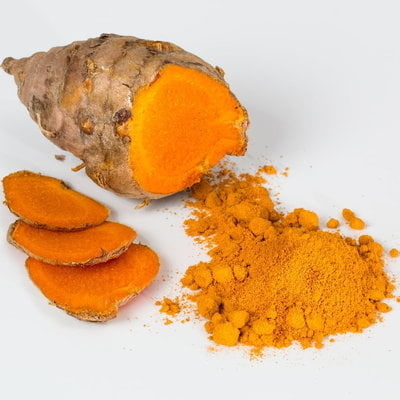
Many names circulate around a single fascinating spice: the CURCUMA. But what is really behind it? Are all these names justified? Our dietician clarifies the questions around the healing power of the golden root...
It is gigantic. Already more than 4000 years ago, turmeric was valued in Southeast Asia as a spice and coloring agent. In Europe, however, its healing power has only recently been used. Seen worldwide, turmeric is today the most scientifically researched single spice.
Here, the secondary plant constituents curcuminoids should be mentioned, of which curcumin is of particular importance. This is also responsible for the orange-yellow color in turmeric.
Curcumin has a long tradition, especially in the Ayurvedic field. However, numerous scientific studies have been conducted in which turmeric is also attributed a number of pharmacological effects.
Especially the antioxidant and anti-inflammatory effects of turmeric have been proven in numerous studies (antioxidant: eliminate free radicals that can cause damage in the body). These positive effects can therefore provide valuable support especially in the context of treatment of inflammatory joint diseases (e.g.: rheumatoid arthritis), as well as chronic inflammatory bowel diseases (e.g.: Crohn's disease, ulcerative colitis). Due to its stimulating effects on the bile flow, curcumin is also used in the Ayurvedic tradition for digestive problems, flatulence and bloating and thus also stimulates fat digestion. Furthermore, studies indicate that curcumin supports the lowering of blood lipid levels, strengthens the cardiovascular system and has a tumor-inhibiting effect as an effective cell protector.
Both the fresh root can be used, as well as the powder from the dried rhizome.
The World Health Organization (WHO) recommends up to 3 g of turmeric powder as a daily dose (especially in the treatment of digestive disorders). This is roughly equivalent to 1 teaspoon.
It is important to add a pinch of pepper. Due to the piperine contained in it, our body can increase the absorption of the active ingredient of turmeric, curcumin, by 2000 times. Since turmeric is fat-soluble, the turmeric intake should also be supplemented with a few drops of oil, so curcumin reaches our bloodstream better. The effect is additionally enhanced if the turmeric is taken over the course of the day, because our body breaks down the turmeric ingredients very quickly.
Turmeric gives an appetizing color and is thus often used as a coloring agent for rice, pasta, bread, pastries and desserts. In addition, turmeric harmonizes very well with carbohydrate-rich foods such as potatoes and legumes (lentils, beans, chickpeas), which it also makes easier to digest. Furthermore, turmeric forms a solid basis for spice mixtures (e.g.: curry powder), as it harmoniously harmonizes different flavors. Not to forget the currently very modern turmeric drinks, such as the warming turmeric latte, the strengthening turmeric tea or the power-packed turmeric-ginger-lemon shot.